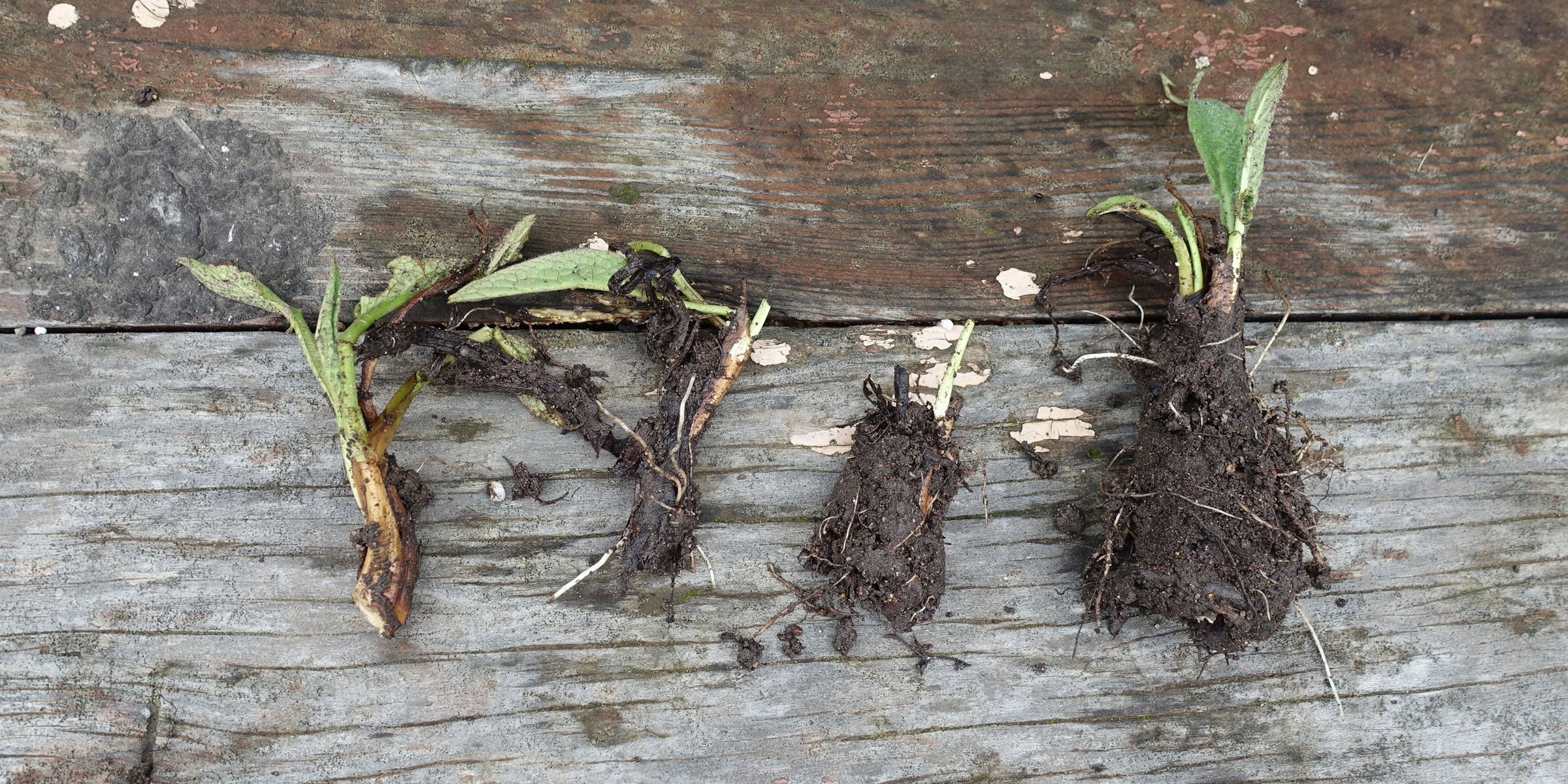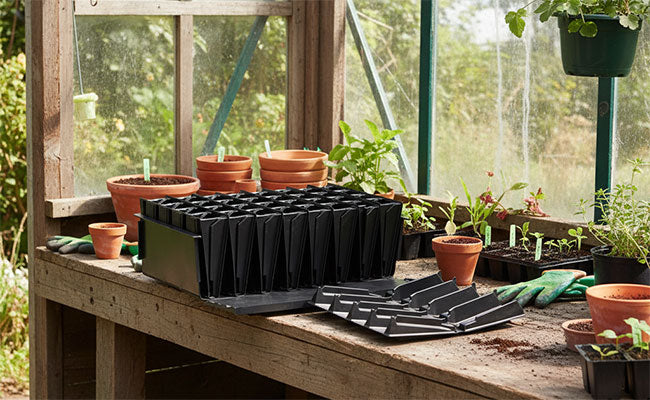
A Step-by-Step Guide to Dividing and Planting Comfrey for a Thriving Garden
If you grow sweet peas or any flowers at all, then you should consider assigning a small patch of your garden to growing comfrey. The leaves of the plant can be rotted down to make a nutrient rich feed for your plants and flowers (more about that in another post)!
If you don't have comfrey growing, then look out for it at your local nursery, ask friends if they have some growing and ask them if you can dig it up and divide the crown. You can also buy comfrey crown cuttings here. Early spring and autumn are great times to do this.
You'll need some pots, plant labels and a good potting soil and a small garden trowel.
Comfrey Leaves Emerging

This is how the comfrey looks in my garden in early spring. It is a cold-hardy perennial which becomes dormant and dies back in the winter and then re-emerges from it's tuberous root system in the spring.
Lifting Comfrey Root

To get a piece of crown, simply dig in with your trowel and break up the pieces. Comfrey is so tough that it is really quite difficult to damage it.
Root Ball

Lift out the root ball and shake off the soil so that you can see the root more clearly.
Break Apart

As I shook off the soil, the roots just came apart pretty much as you see them in this photo. All you need to make a new comfrey plant is a piece of root that has some new growth on it (smaller roots).
Fill Pots

I use 4 inch pots filled with a good quality potting soil.
Plant Your Comfrey Cuttings

Simply plant your comfrey crown cuttings in their own pot, give them some water, place is a sheltered area of your garden or unheated greenhouse, cold frame and watch them grow. Label your plants!
One Month Old Comfrey Cuttings

After one month you will notice that your cuttings have grown considerably. I'm still getting my new planting area ready for them, so they will have to stay in pots for just a little longer.
Wait a minute, isn't comfrey invasive?
Some types of comfrey can be invasive but I grow a sterile cultivar of comfrey called "Bocking 14 (also known as Russian comfrey I believe). The only way that this will spread is through root or crown cuttings. The flowers are sterile which is good news because they are pretty plants and bees and other pollinators love them. You can purchase either root or crown cuttings online - the crown cuttings will establish more quickly whereas the root cuttings may not grow and if they do will take longer. My tutorial above shows how to take crown cuttings. Buy Bocking 14 comfrey cuttings here.







Leave a comment
This site is protected by hCaptcha and the hCaptcha Privacy Policy and Terms of Service apply.